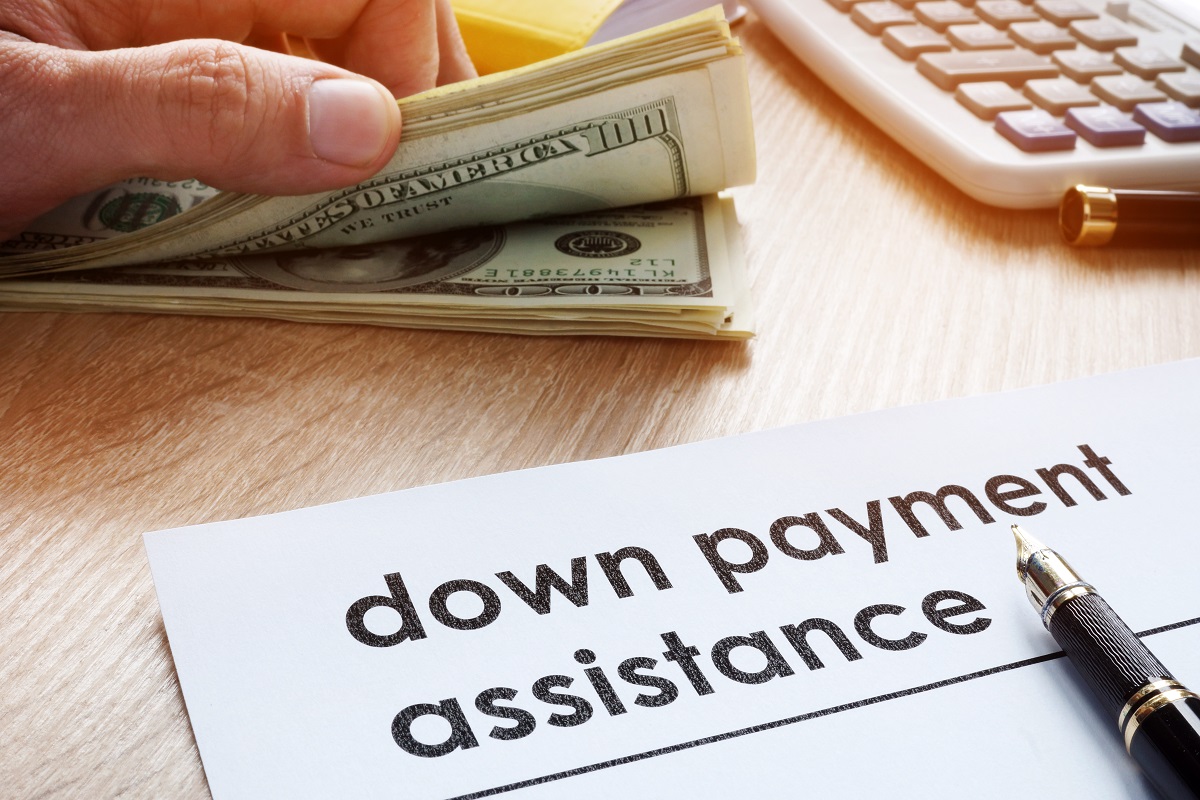
Updated by Craig Berry
If you're considering buying a home but struggling to come up with funds for the down payment, you're not alone.
Many would-be homeowners are still under the impression that they need to come up with 20 percent down to purchase a home. Fortunately, those who quality may be able to get help through down payment assistance programs.
Getting a mortgage loan with down payment assistance
During the mortgage pre-approval process, your lender should cover all of the qualifications necessary to purchase a home. These factors include income, expenses, credit history and assets.
For some would-be home buyers, all qualifications may fall in line except assets. Assets are important, as these generally determine how much you have for down payment and closing costs.
This is where down payment assistance (DPA) programs can come into play. DPAs plans are designed to help home buyers who might otherwise be shut out of the market.
If you are looking at a home priced at $175,000 and need 3 percent down to qualify, you need to save $5,250 for your down payment. If you can save $200 per month, it would take you more than two years to come up with that sum.
In 2003, the American Dream Downpayment Assistance Act was aimed at helping "40,000 families a year" with their down payment and closing costs to further strengthen America's housing market.
When the housing market collapse occurred in 2008, this loan assistance program, along with many others went away. According to a recent report released by the FHA to Congress "Loans for borrowers who receive down payment assistance generally have higher default rates, and borrowers who receive down payment assistance through a government program have an even higher rate of default than borrowers who receive down payment assistance from other sources, such as gifts from family members."
Despite their troubled past, down payment assistance programs still exist and seem to be coming back more and more for those in need.
How down payment assistance works
Down payment assistance programs help home buyers with loans or grants that lower the amount home buyers need to save for down payment.
The down payment fund help is generally considered a: grant, debt you pay off in the future, or interest-free loan.
DPA programs can be administered by a local or state housing authority, a nonprofit organization or directly through your lender. Home buyers can typically apply the DPA funds toward their down payment and/or closing costs.
Most down payment assistance programs are available to first-time home buyers only. "First-time home buyer" is generally defined as someone who hasn't owned a home in the past three years.
Typically, you have to agree to live in the home and use it as your principal residence for a certain period of time. Those time periods can fluctuate but three to five years is typical. Should you move or refinance prior to the agreed upon term, you may be required to repay any assistance money.
If your DPA is treated as loan, the funds would have to be repaid in full if you sell your home, or finish making all of your mortgage payments, including any mortgage refinance.
Public assistance and grants
First-time home buyer grants and public assistance programs could be ideal for your situation. This is because with public assistance and grant funds, the money doesn't usually have to be repaid.
Most grants and public assistance are income dependent and location specific. Many counties within each state have their own first-time home buyer programs and set the rules and requirements for each.
While grants can be great for some, it's always wise to pay close attention to the fine print. As an example, most grants are typically forgiven over time. However, some would-be home buyers may not want to repay the funds if they only live in the home for a short period of time.
This can be especially true for some first-time home buyers purchasing a starter home. They may plan to live in the home for just a couple of years, and then either rent it out or sell the home.
Down payment assistance may not be suited for this type of scenario. Tell your lender about your plans. This way you can receive the best advice for structuring a mortgage loan to properly suit your needs.
Another important consideration is tax recapture requirements.
Some DPA programs levy a recapture tax if you sell your home for a profit before a certain number of years have passed. This means that some gains you get from a home's increased value when you sell might get taxed in order to make up for the break you received earlier. A qualified tax professional should be able to help you have a better understanding of any potential tax ramifications associated with down payment assistance.
Down payment assistance loans
The primary difference between DPA grants and loans is that grants don't have to be repaid unless you sell, leave the property or refinance within a certain period of time.
Loans, on the other hand, must be paid back. Fortunately, many DPA loans are interest-only or even better: interest-free. Interest-free is ideal as you won't be adding another payment to your monthly mortgage loan.
Regardless, you may not be required to repay the loan until your first mortgage is paid off or you sell your home or otherwise relocate. Further, any interest that is charged is often nominal.
Many down payment assistance loans come in the form of a second mortgage, or subordinate lien, with varying payback provisions. The second mortgage is usually funded by a federal, state or local government DPA program, or a nonprofit or an employer that offers down payment help in their market or service area.
More down payment assistance via a second mortgage
Some second mortgage programs defer monthly payments, forgive some or all of the down payment help over time, or require monthly payments. The terms vary across programs, and sometimes a program may combine different features.
Repayable down payment assistance programs provide the buyer with the down payment they need now so they can buy a home sooner. The funds are delivered at closing often as a 0% interest second loan, but some can accrue interest or may be amortizing loans.
These down payment programs typically range from 5-year to 30-year loans with varying repayment terms. The repayment starts immediately or kicks in after a predetermined period of months or years. This type of loan is also commonly known as a "soft" second.
"Silent seconds" are down payment programs that postpone repayment of the original down payment assistance until one of several events occurs -- typically, when the borrower sells, refinances, rents or moves out of the original home purchased.
With a "forgivable second" mortgage program, some or all of the original down payment assistance amount is forgiven. When and how much of that down payment help is forgiven may vary, but it's common for a percentage of the loan to be forgiven each year for a predefined number of years.
For example, 20 percent of the loan might be forgiven each year for five years. After five years the entire original down payment loan is forgiven and the second lien is removed. However, if the program's conditions are not met - for example, the buyer sells or moves out of the home - the loan must be repaid, at times with interest.
Down payment assistance is still available
Not everyone qualifies for down payment assistance, in light of their income, assets and expenses. However, its worth looking into if limited cash is an obstacle to buying a home at today's mortgage rates.
Borrowers taking advantage of DPA programs can not only save money when closing on a house, but can continue to save because they owe less on their mortgage and have lower monthly payments.
Fortunately for those in need, down payment assistance still exists. In fact, these programs have been on the rise.
Whether it's a grant, a loan that may or may not need to be repaid, down payment assistance can be a great resource to help first-time home buyers, as they can mean the difference in owning a home today vs having to wait.



